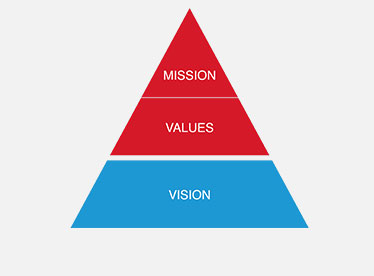-
Products
-
Transportation & Mobility Solutions
Transportation & Mobility Solutions
At Hitachi, we engineer industry-leading transportation and mobility solutions by leveraging decades of knowledge and using high-quality automotive material and components.
-
Energy Solutions
Energy Solutions
We believe the only solution for fulfilling the growing power requirements of industries and society is through a comprehensive portfolio of sustainable energy solutions and delivering innovative high-efficiency energy systems.
-
IT Infrastructure Services
IT Infrastructure Services
Hitachi’s state-of-the-art IT products and services are known to streamline business processes which result in better productivity and a higher return on investment (ROI).
-
Social Infrastructure: Industrial Products
Social Infrastructure: Industrial Products
Within the industrial sector, Hitachi is consistently delivering superior components and services, including industrial and automation solutions, useful in manufacturing facilities.
-
Healthcare & Life Sciences
Healthcare & Life Sciences
At Hitachi, we believe that healthcare innovation is crucial to a society’s advancement. A strong healthcare sector is often considered an inseparable element of a developed society.
-
Scientific Research & Laboratory Equipments
Scientific Research & Laboratory Equipments
Hitachi focuses on extensive research and development, transformative technology, and systems innovation to unfold new possibilities and create new value through scientific endeavors that strengthen the connection between science and social progress.
-
Smart Audio Visual Products
Smart Audio Visual Products
Since 1956, Hitachi audio visual products have provided state of the art solutions to consumers all over the world. It has been our pleasure to design competitive products at the lowest possible prices while maintaining our industry-leading quality standards for your comfort and enjoyment.
-
View All Products
Hitachi Products & Solutions
Hitachi, a technology leader in the U.S., offers a diverse set of products and solutions, and breakthrough technologies for smart manufacturing, green energy and mobility solutions that empower governments, businesses, and communities.
-
Transportation & Mobility Solutions
- Social Innovation Solutions
-
About Us
-
Hitachi in the U.S.A.
Hitachi in the U.S.A.
Discover information about the Hitachi group network across the Americas, upcoming events and sustainability endeavours, CSR policies, and corporate government relations.
-
About Hitachi Group
About Hitachi Group
Explore our leadership team, investor relations, environmental vision, and sustainability goals. Learn how Hitachi is leveraging its research & development capabilities for social innovation across industry verticals.
-
Hitachi in the U.S.A.
- News Releases
- Case Studies
- Careers
- R&D
Hitachi and Texas Instruments Announce Agreement to Jointly Develop HDTV
TOKYO, JAPAN AND DALLAS, TEXAS
Apr 27, 1999 16:26 PM
Digital Light Processing technology chosen as basis for new all-digital multimedia display
Hitachi, Ltd.(TSE:6501 / NYSE:HIT) and Texas Instruments (TI) announced today that they have signed an agreement under the terms of which Hitachi will use Digital Light Processing (DLP) technology to develop the world's first all-digital, large screen high definition (HD) rear projection television. Hitachi plans to release the new television in Japan and the U.S. market in the second half of 2000.
The agreement also calls for TI to further develop DLP technology in support of HDTV applications with 16:9 aspect ratio, and for the two companies to collaborate in the development of new, higher brightness projection optics, HDTV signal receiving technology and an image processing LSI (Large Scale Integrated Circuit).
The two companies will also consider extending future collaboration beyond the areas announced today.
"We have been extremely impressed with the significant advances in DLP technology aimed at serving the Home Entertainment market," said Masao Kato, Executive Vice President of Digital Media operations at Hitachi. "While DLP technology has served the data projection market with many leading products, recent breakthroughs - focused on improving video performance - have elevated DLP to a new level. It's this outstanding video performance that is required to satisfy the demands of Home Entertainment enthusiasts. This new project represents an exciting opportunity for Hitachi to bring innovative, premium performance products to the market: we're delighted to have signed this agreement with TI today."
"Signing this agreement with Hitachi is an extremely exciting milestone in the development of DLP technology," said Bob England, Senior Vice President and Manager of TI's Digital Imaging division. "Hitachi's choice of DLP for this new High Definition product speaks volumes about not only how much the technology has progressed, but also its extraordinary potential for the future. We're excited that DLP technology will deliver the first-ever all-digital display to the home entertainment market."
Demand for home theater systems is increasing worldwide: digital terrestrial broadcasting will begin this spring in ten major cities in the U.S, with satellite high definition broadcasting starting during the summer. In Japan, BS digital broadcasting will begin in 2000, bringing high resolution, high image quality movie programming to every home.
"Texas Instruments demonstrated a prototype of this technology at CES in January and it was truly awe-inspiring," said David E. Mentley, Vice President of Stanford Resources, Inc. "It clearly has the potential to raise the performance bar for rear-projection HDTV displays."
Hitachi has built a substantial business in the projection display market and now has a broad product line which includes CRT monitors for TV and PC applications, LCD-based projectors and displays and plasma display panels (PDPs). In the United States, Hitachi has a significant share of the market for projection televisions under the UltraVision brand name. Hitachi's in-house optics technology development enables all its projection and display products to feature outstanding image quality.
DLP is an enormously attractive technology for the development of next generation HDTV systems, based on its digital nature, its high resolution, its high contrast and the fact that it enables the development of uniquely small and lightweight product packaging.
Today, TI supplies DLP subsystems to more than twenty-five of the world's top projector manufacturers, who then design, manufacture and market DLP-based projectors. Over the past three years, DLP-based projectors have consistently won some of the audio-visual industry's most prestigious awards, including, in June 1998, an Emmy Award from the American Academy of Television Arts & Sciences. Since shipments began in early 1996, TI has delivered over 150,000 DLP subsystems to its customers. There are now over fifty DLP-based products in the market.
At the heart of TI's Digital Light Processing technology is the Digital Micromirror Device (DMD), an optical semiconductor chip that has an array of microscopic mirrors mounted on a standard logic device. These tiny mirrors operate as optical switches to create a high resolution, full color image.
Hitachi, Ltd., headquartered in Tokyo, Japan, is one of the world's leading global electronics companies, with fiscal 1997 (ended March 31, 1998) consolidated sales of 8,417 billion yen ($63.8 billion*). The company manufactures and markets a wide range of products, including computers, semiconductors, consumer products and power and industrial equipment. For more information on Hitachi, Ltd., please visit Hitachi's Web site at http://www.hitachi.co.jp.
*At an exchange rate of 121 yen to the dollar.
Texas Instruments Incorporated is a global semiconductor company and the world's leading designer and supplier of digital signal processing and analog technologies, the engines driving the digitization of electronics. Headquartered in Dallas, Texas, the company's businesses also include materials and controls, educational and productivity solutions, and digital imaging. The company has manufacturing or sales operations in more than 25 countries.
Texas Instruments is traded on the New York Stock Exchange under the symbol TXN. More information on TI's DLP technology can be found on the World Wide Web at http://www.ti.com/dlp.
Digital Light Processing, DLP, Digital Micromirror Device and DMD are all trademarks of Texas Instruments. UltraVision is a trademark of Hitachi, Ltd. in the United States. All other products and names may or may not be trademarks or registered trademarks of their respective companies.






